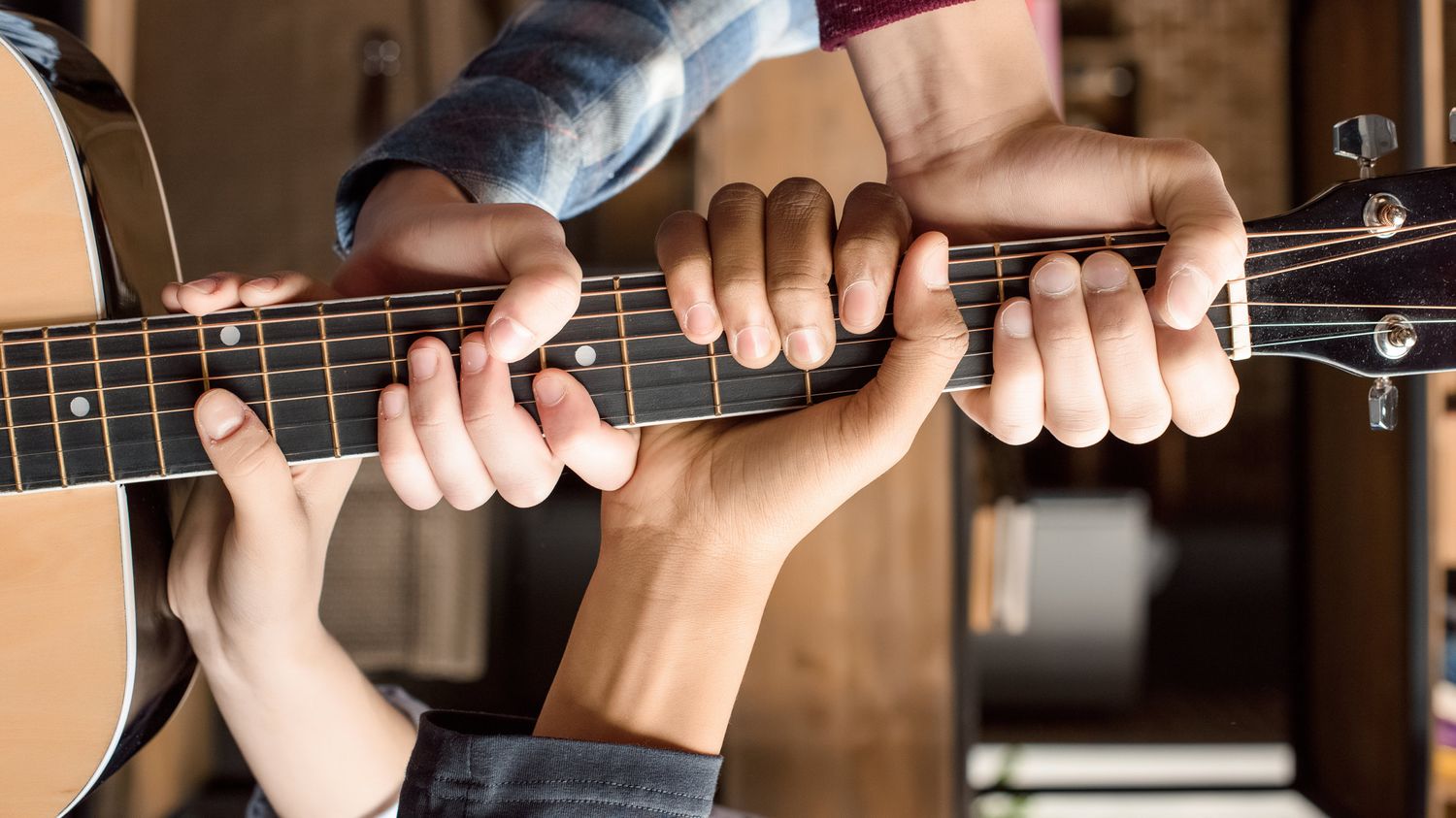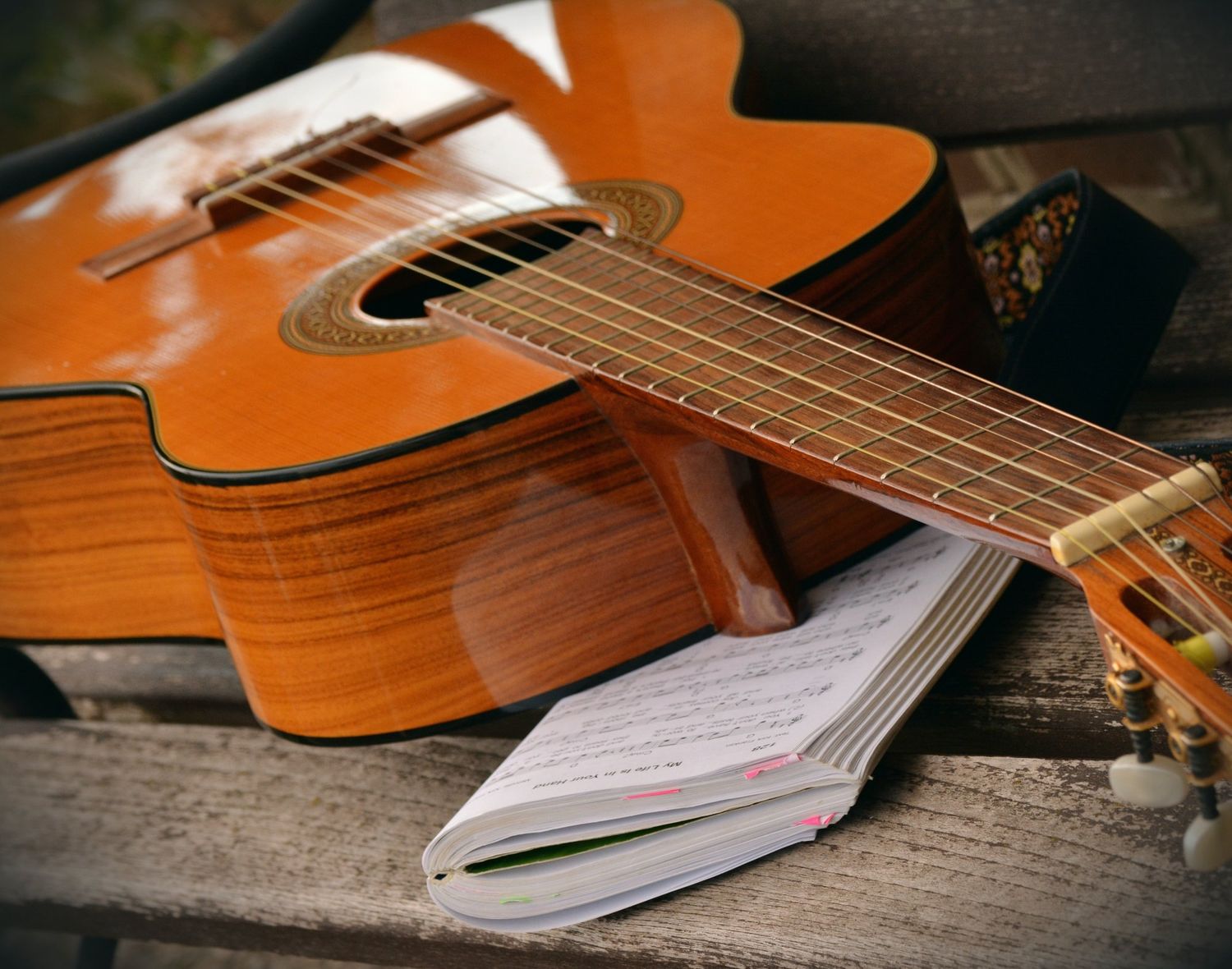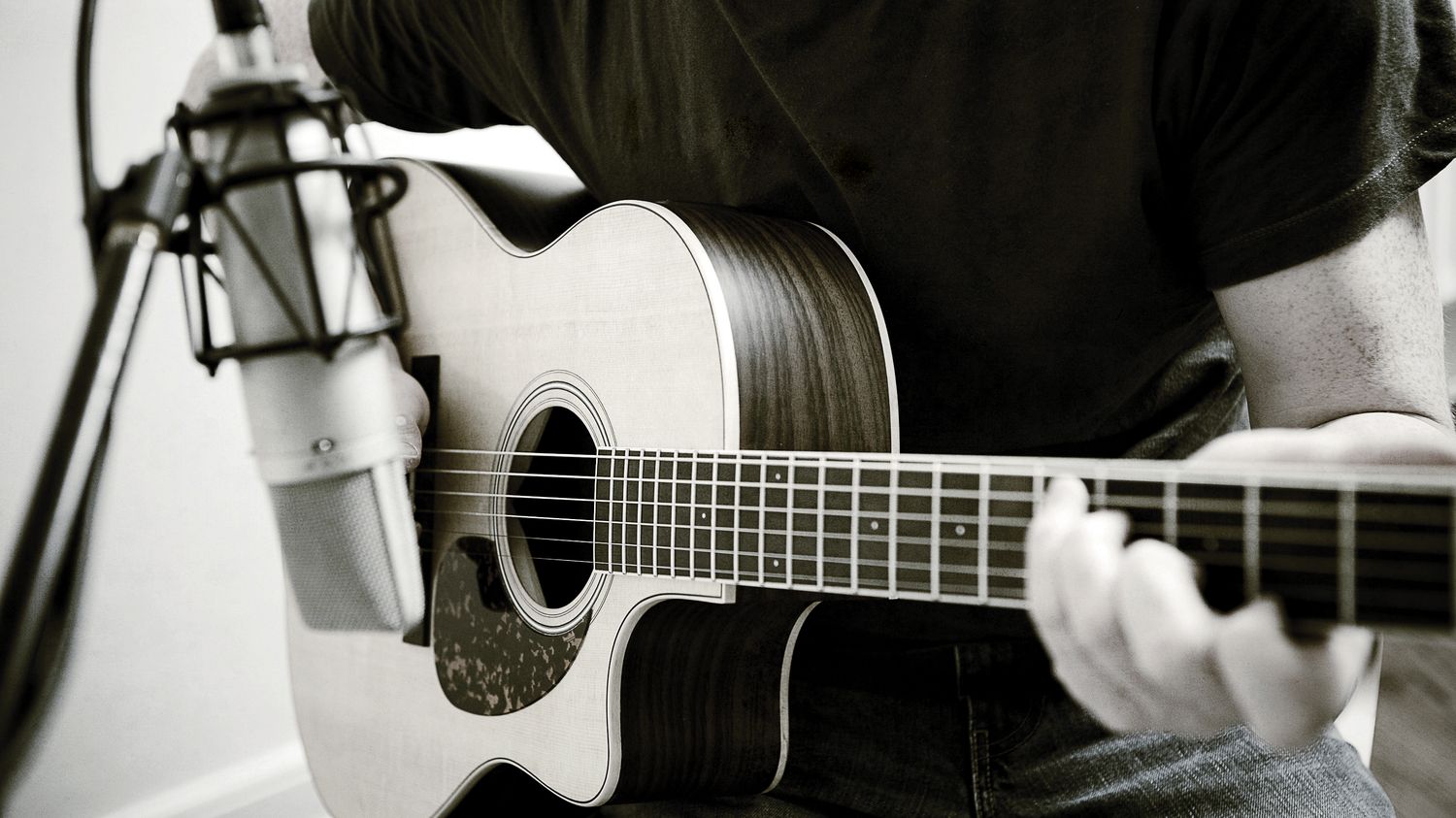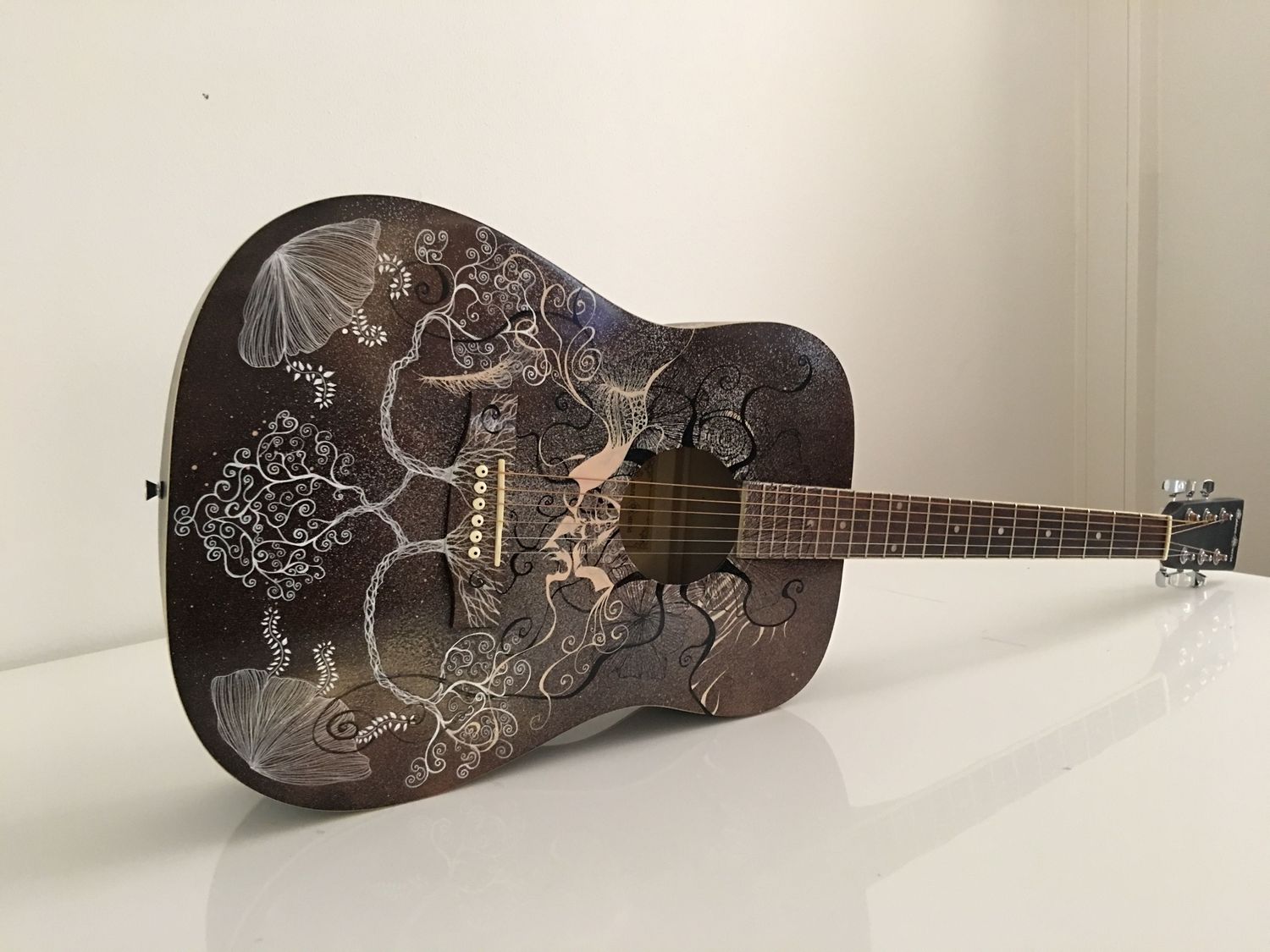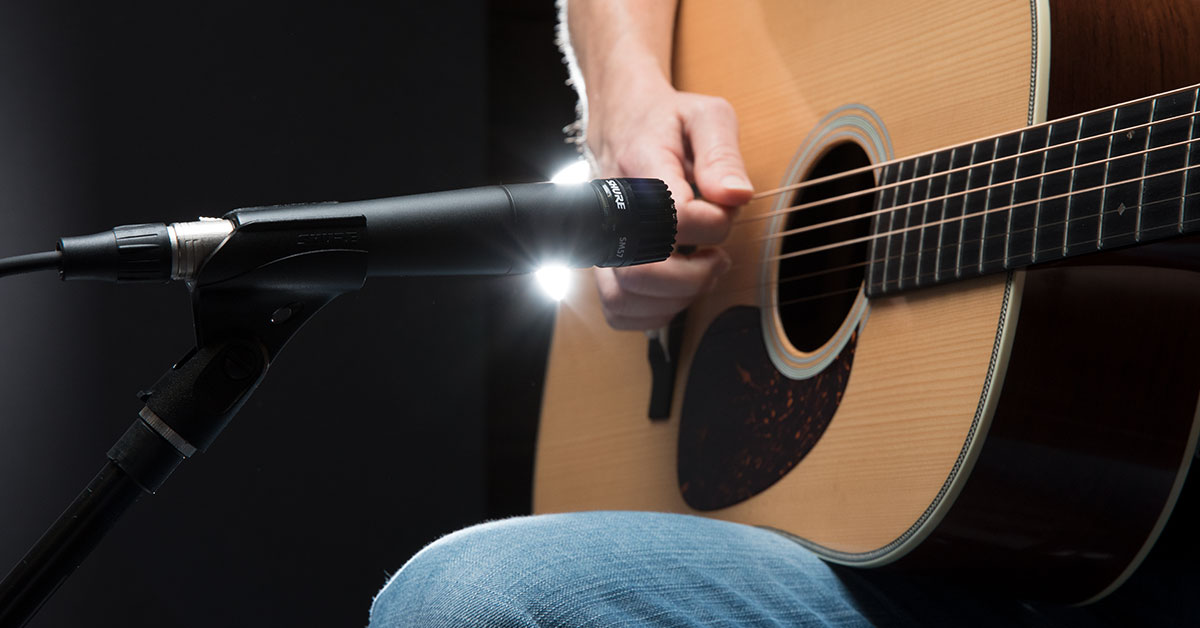Home>Production & Technology>Acoustic>How Hard Is It To Learn Acoustic Guitar


Acoustic
How Hard Is It To Learn Acoustic Guitar
Published: March 11, 2024
Learn how to play acoustic guitar with ease. Discover the best techniques and tips for mastering the acoustic guitar. Start your musical journey today!
(Many of the links in this article redirect to a specific reviewed product. Your purchase of these products through affiliate links helps to generate commission for AudioLover.com, at no extra cost. Learn more)
Table of Contents
Introduction
Learning to play the acoustic guitar is a journey that can be both challenging and immensely rewarding. Whether you're a complete beginner or have some musical background, embarking on this musical adventure opens up a world of creativity and self-expression. The acoustic guitar, with its warm and resonant tones, has the power to captivate audiences and evoke emotions in a way that few other instruments can.
As you delve into the world of acoustic guitar, you'll discover the joy of creating beautiful melodies and harmonies with your own hands. The process of learning to play the acoustic guitar is not just about mastering the technical aspects of the instrument; it's also about developing a deep connection with music and expressing your unique musical voice.
In this comprehensive guide, we'll explore the various facets of learning acoustic guitar, from understanding the basics and learning chords to developing fingerpicking techniques and mastering complex barre chords. We'll also delve into the importance of rhythm, timing, and building a diverse repertoire. By the end of this journey, you'll have gained valuable insights into the art of playing acoustic guitar and be well-equipped to embark on your own musical endeavors.
So, grab your acoustic guitar, find a comfortable spot, and let's embark on this enriching musical journey together. Whether you aspire to strum along to your favorite songs, write your own music, or perform for an audience, the world of acoustic guitar awaits with open arms. Let's dive in and uncover the secrets of mastering this timeless and enchanting instrument.
Understanding the Basics of Acoustic Guitar
Before delving into the intricacies of playing the acoustic guitar, it's essential to grasp the fundamental aspects of this beloved instrument. The acoustic guitar is a stringed instrument that produces sound through the vibration of its strings. It is characterized by its hollow body, which amplifies the vibrations of the strings, resulting in the rich and resonant tones that define its distinctive sound.
One of the first things aspiring guitarists encounter is familiarizing themselves with the various parts of the acoustic guitar. From the headstock and tuning pegs to the fretboard and soundhole, each component plays a crucial role in shaping the instrument's playability and tonal characteristics. Understanding the anatomy of the acoustic guitar lays the foundation for developing a deeper connection with the instrument.
Tuning is another fundamental aspect that aspiring guitarists must grasp. The standard tuning for an acoustic guitar is EADGBE, with each letter representing the pitch of the open strings from the lowest to the highest. Tuning the guitar ensures that it produces the correct pitches and harmonizes with other instruments or recorded music.
Furthermore, learning about the different types of acoustic guitars, such as dreadnought, concert, and parlor, provides insight into the tonal variations and playing styles associated with each type. Additionally, understanding the differences between steel-string and nylon-string acoustic guitars can influence the choice of instrument based on the desired sound and playing technique.
Aspiring guitarists also need to familiarize themselves with basic playing techniques, such as holding the guitar, positioning the fingers on the fretboard, and using a pick or fingerstyle approach. Developing proper posture and hand positioning not only enhances playing comfort but also contributes to producing clear and resonant tones.
Understanding the basics of acoustic guitar sets the stage for a fulfilling musical journey, laying a solid foundation for mastering more advanced techniques and concepts. With a firm grasp of the instrument's anatomy, tuning, types, and playing techniques, aspiring guitarists are well-equipped to progress to the next stages of their musical exploration.
Learning Chords and Strumming Patterns
Learning chords and strumming patterns is a pivotal aspect of mastering the acoustic guitar. Chords form the backbone of countless songs across various genres, serving as the harmonic foundation upon which melodies and lyrics are built. Understanding and effectively executing chords, along with complementing strumming patterns, empowers guitarists to bring songs to life and express their musical creativity.
To begin, aspiring guitarists typically start with fundamental open chords such as C, G, D, E, and A. These chords are played using a combination of fretted notes and open strings, creating rich and resonant harmonies. As proficiency grows, players delve into more complex chords, including barre chords and extended voicings, expanding their harmonic palette and versatility.
Mastering chords involves developing muscle memory and finger dexterity to transition smoothly between different chord shapes. This process requires patience and consistent practice, as precision and clarity are essential for producing clean and melodious chord progressions. Additionally, understanding chord theory and the relationship between chords within a key enables guitarists to navigate song structures and improvise accompaniments with confidence.
In parallel with learning chords, mastering strumming patterns is crucial for infusing rhythm and dynamics into guitar playing. Strumming patterns dictate the rhythmic feel of a song, encompassing elements such as downstrokes, upstrokes, accents, and syncopation. By honing their strumming technique, guitarists can imbue songs with a compelling groove and convey the intended mood and energy.
As players progress, they explore diverse strumming patterns that suit different musical styles, from gentle fingerstyle arpeggios to lively percussive strumming. Experimenting with variations in dynamics and articulation further enhances the expressiveness of strummed passages, allowing guitarists to convey emotion and nuance through their playing.
Moreover, integrating chord transitions with strumming patterns fosters a seamless and cohesive musical flow. This synergy enables guitarists to accompany vocals or instrumental melodies effectively, creating a captivating sonic tapestry that engages listeners and elevates the overall musical experience.
In essence, learning chords and strumming patterns is a transformative journey that equips guitarists with the essential tools to interpret and perform a vast repertoire of songs. The harmonious interplay between chords and strumming patterns forms the cornerstone of acoustic guitar playing, empowering musicians to convey their artistic vision and connect with audiences on a profound level.
Fingerpicking Techniques
Fingerpicking, also known as fingerstyle guitar, is a captivating technique that adds depth and intricacy to acoustic guitar playing. Unlike strumming with a pick, fingerpicking involves plucking the strings directly with the fingertips or fingernails, allowing for greater control over individual notes and creating rich, layered textures. This technique is widely embraced across various musical genres, from folk and blues to classical and contemporary acoustic arrangements.
At the core of fingerpicking is the development of independent finger coordination, enabling guitarists to play melody, harmony, and bass lines simultaneously. This multifaceted approach unlocks a world of expressive possibilities, allowing players to craft intricate arrangements that showcase the full potential of the acoustic guitar.
One of the fundamental fingerpicking patterns is the Travis picking style, named after the influential country guitarist Merle Travis. This pattern involves alternating the thumb between the bass strings while the fingers pluck the higher strings, creating a rhythmic and melodic interplay. Mastering Travis picking lays a strong foundation for exploring diverse fingerpicking patterns and adapting them to different musical contexts.
In addition to traditional fingerpicking patterns, incorporating percussive elements such as tapping and slapping further enriches the sonic palette of fingerstyle guitar. These percussive techniques, popularized by modern acoustic virtuosos, infuse rhythmic vitality and dynamic flair into fingerpicked arrangements, elevating the acoustic guitar to new expressive heights.
Furthermore, fingerpicking opens the door to exploring alternate tunings, where the guitar's strings are tuned to non-standard pitches, creating unique harmonic resonances and expanding the instrument's tonal range. Alternate tunings, such as DADGAD and open G, inspire fresh creative avenues and encourage guitarists to approach composition and improvisation from innovative perspectives.
Beyond technical proficiency, fingerpicking encourages musicians to develop a keen ear for tone and dynamics, honing their ability to coax nuanced expressions from the instrument. The subtle interplay of finger pressure, attack, and release shapes the timbre and articulation of each note, allowing guitarists to convey emotion and storytelling through their playing.
In essence, fingerpicking techniques embody the artistry and versatility of acoustic guitar playing, inviting musicians to embark on a journey of sonic exploration and self-expression. Whether evoking pastoral landscapes with delicate arpeggios or unleashing rhythmic intensity through percussive flourishes, fingerstyle guitar empowers players to weave captivating tapestries of sound that resonate deeply with listeners.
Developing Rhythm and Timing
Developing a strong sense of rhythm and impeccable timing is a cornerstone of mastering the acoustic guitar. While technical proficiency and theoretical knowledge are essential, it is the ability to groove and lock into the rhythmic pulse that truly elevates a guitarist's playing to a higher level.
At the heart of rhythm development is the cultivation of a steady and consistent internal pulse. This internal metronome serves as a guide, allowing guitarists to synchronize their playing with precision and confidence. Whether strumming chords, fingerpicking intricate patterns, or performing complex rhythmic embellishments, a solid internal pulse forms the bedrock of compelling and engaging musical performances.
One effective approach to honing rhythm and timing is through the use of a metronome. This invaluable tool provides a constant audible reference, aiding guitarists in developing a keen sense of timing and the ability to maintain a steady tempo. By practicing with a metronome across various tempos and musical styles, guitarists refine their rhythmic accuracy and internalize a natural feel for different rhythmic subdivisions.
Furthermore, immersing oneself in diverse musical genres and rhythmic traditions broadens the rhythmic vocabulary and fosters a deeper understanding of rhythmic nuances. Exploring genres such as blues, jazz, Latin, and world music exposes guitarists to a rich tapestry of rhythmic patterns, syncopations, and grooves, expanding their rhythmic sensibilities and enriching their musical palette.
In addition to external tools and influences, developing rhythm and timing also involves cultivating a keen sense of active listening and ensemble playing. Collaborating with other musicians, whether in a band setting or informal jam sessions, hones the ability to lock in with other instrumentalists and synchronize musical phrases, creating a cohesive and unified sonic tapestry.
Moreover, integrating rhythmic embellishments and percussive techniques into guitar playing enhances the rhythmic expressiveness and adds dynamic flair to performances. Techniques such as palm muting, percussive slaps, and rhythmic strumming variations inject rhythmic vitality and texture, infusing compositions with a captivating rhythmic energy.
Ultimately, developing rhythm and timing is a continuous and evolving journey that transcends technical proficiency, inviting guitarists to embody the rhythmic heartbeat of the music they create. By nurturing a strong internal pulse, embracing diverse rhythmic influences, and engaging in collaborative musical experiences, guitarists cultivate a profound connection to rhythm that permeates every note they play, captivating audiences and igniting the spirit of the music.
Mastering Barre Chords
Mastering barre chords is a significant milestone in the journey of acoustic guitar mastery. Barre chords, also known as bar chords, involve using a single finger to fret multiple strings across the guitar neck, effectively creating movable chord shapes. This versatile technique empowers guitarists to play a wide range of chords and transpose songs to different keys, expanding their musical repertoire and creative possibilities.
At the core of mastering barre chords is developing finger strength and dexterity to execute clean and resonant barre shapes. The index finger acts as a movable "bar" across the fretboard, while the remaining fingers form chord shapes above the bar. This technique requires consistent pressure and precise finger positioning to ensure that all strings ring out clearly, producing a full and harmonious sound.
One of the foundational barre chord shapes is the "E-shaped" barre chord, derived from the open E major chord. By barring across the fret and forming the E major shape, guitarists can play a variety of major and minor chords up and down the neck, unlocking a wealth of harmonic possibilities. Similarly, the "A-shaped" barre chord, based on the open A major chord, offers a movable framework for playing major and minor chords with a different tonal quality.
As guitarists delve deeper into the world of barre chords, they encounter variations such as dominant 7th, minor 7th, and major 7th barre shapes, each adding distinct color and flavor to chord progressions. Mastery of these variations equips guitarists with the tools to infuse songs with rich harmonic textures and create captivating chord sequences that elevate their musical expression.
Moreover, integrating barre chords with open chords and other playing techniques enhances the versatility and dynamism of acoustic guitar playing. Transitioning seamlessly between barre and open chords, incorporating embellishments, and exploring rhythmic variations enriches the musical tapestry, allowing guitarists to craft compelling arrangements and interpretations of songs.
In essence, mastering barre chords opens up a world of harmonic possibilities and empowers guitarists to navigate the fretboard with confidence and creativity. This foundational technique forms the backbone of versatile and expressive acoustic guitar playing, enabling musicians to bring their musical visions to life and captivate audiences with the rich and resonant sounds of the acoustic guitar.
Building Repertoire and Improvisation Skills
Building a diverse repertoire and honing improvisation skills are essential components of becoming a well-rounded acoustic guitarist. A robust repertoire encompasses a wide range of songs, styles, and musical genres, providing a platform for artistic expression and performance. Meanwhile, improvisation skills empower guitarists to spontaneously create music, infusing their playing with spontaneity and personal flair.
Expanding one's repertoire involves exploring songs from various eras and genres, encompassing classic rock anthems, folk ballads, blues standards, and contemporary hits. By delving into diverse musical styles, guitarists gain a deeper understanding of song structures, harmonic progressions, and melodic phrasing, enriching their musical vocabulary and fostering a versatile approach to playing.
Furthermore, delving into the nuances of different musical genres cultivates a broad stylistic awareness, enabling guitarists to interpret songs authentically and infuse them with the appropriate tonal characteristics and emotional resonance. Whether it's capturing the raw energy of blues, the introspective lyricism of folk, or the infectious rhythms of Latin music, a diverse repertoire equips guitarists to engage with audiences across a spectrum of musical experiences.
In parallel with building a repertoire, developing improvisation skills empowers guitarists to spontaneously create music in real-time, fostering a sense of musical freedom and exploration. Improvisation encourages musicians to trust their instincts, experiment with melodic motifs and harmonic variations, and respond intuitively to the musical moment.
One approach to honing improvisation skills involves familiarizing oneself with scales, modes, and melodic patterns, providing a foundational framework for spontaneous musical expression. By internalizing these musical elements, guitarists gain the confidence to navigate the fretboard fluidly, weaving melodic tapestries that reflect their unique musical voice.
Moreover, immersing oneself in jam sessions, collaborative improvisation, and live performance settings nurtures improvisational fluency, fostering the ability to communicate musically with fellow musicians and respond dynamically to the ebb and flow of the music. This interactive approach to improvisation cultivates a sense of musical dialogue and spontaneity, fostering a deep connection to the creative essence of music.
In essence, building a diverse repertoire and honing improvisation skills are integral to the development of a well-rounded acoustic guitarist. A rich and varied repertoire provides a platform for musical expression and performance, while improvisation skills foster spontaneity and creativity, allowing guitarists to explore the boundless possibilities of musical expression. Through the synergy of repertoire and improvisation, guitarists embark on a continuous journey of musical discovery and self-expression, embracing the transformative power of the acoustic guitar.
Conclusion
In conclusion, the journey of learning acoustic guitar is a profound and transformative experience that transcends technical proficiency and theoretical knowledge. It is a journey that encompasses the development of a deep connection with music, the exploration of diverse playing techniques, and the cultivation of a versatile and expressive musical voice. Aspiring guitarists embark on this journey with a sense of curiosity and passion, eager to unlock the boundless potential of the acoustic guitar and immerse themselves in the rich tapestry of musical expression.
Throughout this comprehensive guide, we have delved into the fundamental aspects of acoustic guitar playing, from understanding the instrument's anatomy and tuning to mastering essential techniques such as chords, strumming patterns, fingerpicking, and barre chords. We have also explored the significance of rhythm, timing, building a diverse repertoire, and honing improvisation skills, all of which contribute to the holistic development of an accomplished acoustic guitarist.
The art of playing acoustic guitar extends beyond technical proficiency; it is a journey of self-discovery, creativity, and emotional expression. It is about channeling one's innermost thoughts and feelings through the strings of the guitar, creating melodies that resonate with the soul and captivate the hearts of listeners. It is about embracing the rhythmic heartbeat of music and weaving intricate harmonies that evoke a myriad of emotions.
As guitarists progress on this journey, they not only refine their technical skills but also cultivate a deep understanding of musical nuances, develop a keen ear for tone and dynamics, and nurture a profound connection to the creative essence of music. They become storytellers, conveying narratives through the language of music, and ambassadors of emotion, evoking feelings that transcend words.
Ultimately, the journey of learning acoustic guitar is a testament to the enduring power of music to inspire, uplift, and unite. It is a journey that invites individuals to embark on a continuous exploration of self-expression, creativity, and musical discovery. Whether strumming gentle ballads, fingerpicking intricate melodies, or improvising spontaneous compositions, the acoustic guitar becomes a vessel for personal expression and a conduit for connecting with others through the universal language of music.
As we conclude this guide, it is our hope that aspiring guitarists are inspired to embrace the enriching journey of learning acoustic guitar with passion, perseverance, and an unwavering commitment to musical excellence. May the resonant tones of the acoustic guitar continue to echo through the corridors of time, weaving stories, evoking emotions, and inspiring generations to come.



